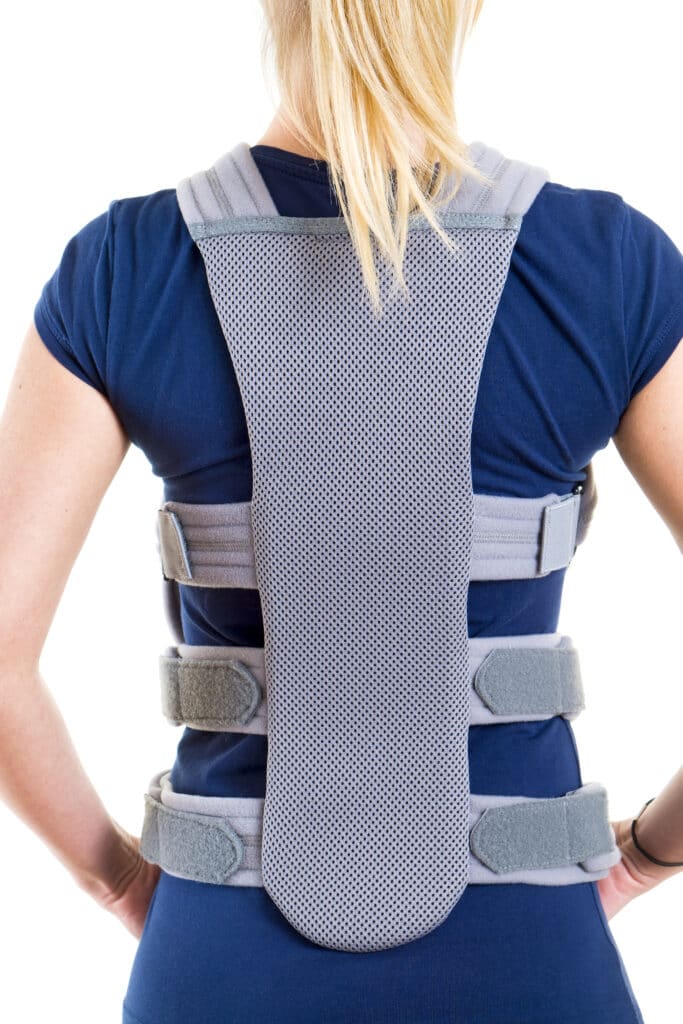Bracing for spinal fractures involves wearing a supportive device, such as a back brace, to immobilize the affected area and prevent further injury. This helps to stabilize the spine and allow it to heal properly. The type of brace used depends on the location and type of fracture.
What is a spinal fracture?
A spinal fracture is a break in one or more of the bones (vertebrae) that make up the spinal column. It can be caused by trauma, such as a fall or car accident, or by a medical condition that weakens the bones, such as osteoporosis.
When is bracing used?
Bracing for spinal fractures is used when there is a risk of instability or potential for further injury to the spine.
Bracing is usually used as a conservative, non-surgical option for managing spinal fractures, but may be used in conjunction with other treatments, such as pain management.
The goal of bracing is to support the healing process and prevent further injury.
What are the different types of braces used to treat a fracture?
There are several types of braces that may be used to treat spinal fractures, depending on the location and severity of the break.
Some examples include:
- Cervical collar: used for neck fractures to limit movement and stabilize the neck
- Halo brace: used to treat fractures of the cervical spine (neck). It consists of a metal ring that is fastened to the skull with pins, and a body jacket that is worn over the shoulders. The halo brace is typically used for more severe fractures
- Thoracolumbosacral orthosis (TLSO): used for mid-to-lower back fractures to provide support to the entire spine
- Lumbar sacral orthosis (LSO): used for lower back fractures to provide support to the lumbar and sacral regions

How long do I need to wear the brace?
In general, the duration of bracing can range from several weeks to several months.
The duration of time a person needs to wear a brace for a spinal fracture can vary depending on several factors, including:
- Location and severity of the fracture: more severe fractures may require a longer period of bracing.
- Individual’s progress in healing: if the fracture is healing well, bracing may be discontinued sooner.
- Age and overall health: older adults or those with underlying health conditions may take longer to heal.
Do I have to wear the brace at all times?
Some braces may need to be worn all the time, while others may only need to be worn during certain activities or while sleeping. A doctor will provide specific instructions on when and how long to wear the brace, based on the individual’s needs and progress in healing.
In some cases, a doctor may recommend gradually reducing the amount of time spent wearing the brace as the person’s condition improves.
How will wearing a brace affect my daily life?
Wearing a brace for a spinal fracture can have an impact on a person’s daily life, including:
- Mobility: wearing a brace may limit a person’s mobility and make it difficult to perform certain activities, such as bending or lifting heavy objects.
- Comfort: some people may experience discomfort or skin irritation from wearing the brace.
- Clothing: a person may need to adjust their wardrobe to accommodate the brace, and some tight-fitting clothing may be difficult to wear.
- Sleep: sleeping may be affected, as some braces may be uncomfortable to wear while lying down.
While wearing a brace can have some limitations and challenges, it is an important component of treating a spinal fracture and allowing the spine to heal properly. It is important to follow a doctor’s recommendations for wearing the brace and to wear it as directed to ensure proper healing and prevent further injury.
